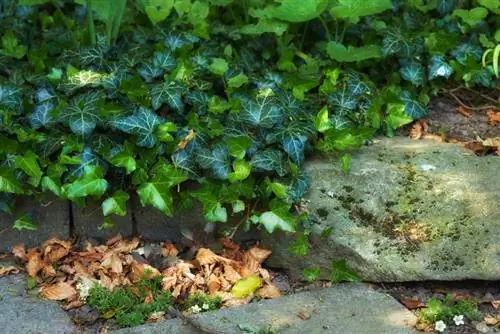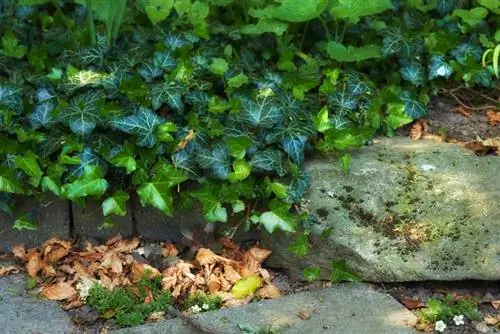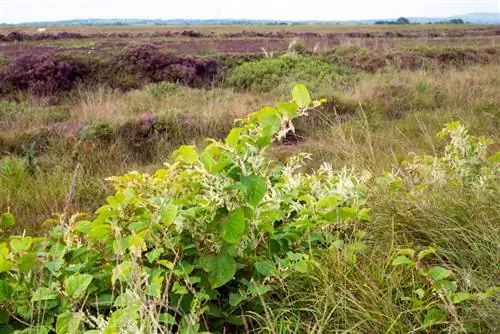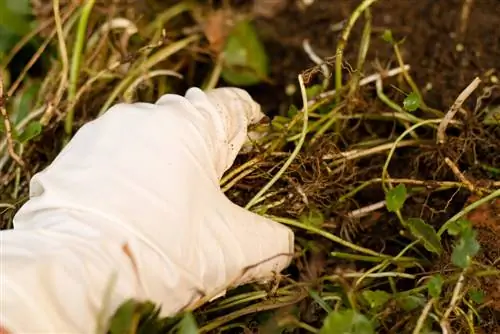- Author admin [email protected].
- Public 2023-12-16 16:46.
- Last modified 2025-01-23 11:20.
Ivy does not enjoy undivided popularity in the garden. While many gardeners appreciate its fast growth and ease of care, others fear that ivy, as a ground cover, is difficult to remove from the garden. This is how you proceed to remove the ground cover.

How to remove ground cover ivy?
To remove ivy as a ground cover, cut off above-ground shoots, carefully pull out adherent roots and dig up old roots. Remove cuttings and roots to prevent regrowth and work with gloves and a breathing mask.
How to remove ground cover ivy
- Cut above-ground shoots
- Carefully pull out the adhesive roots
- digging up old roots
- Do not leave cuttings and roots lying around
If the ivy area is densely overgrown, it is difficult to distinguish between the individual plants, especially since ivy forms many runners with adhesive roots.
Start by removing ivy as a ground cover at the edge and cut off the thickest shoots with secateurs (€54.00 on Amazon). Gently pull out small roots. If the soil is very dry, moisten it beforehand so that the ivy can be pulled out more easily.
When all above-ground shoots have been cut off, loosen the soil with a digging fork and pull out the old roots as completely as possible.
Be sure to remove any cutting residue
Don't leave trash on the floor. Ivy is very robust. New roots can also form on apparently dried shoots, so that the plant forms offshoots.
By tidying up, you also prevent dogs or cats from gnawing on the woody stems and thus poisoning themselves.
If you throw ivy on the compost heap, it can spread further. If you want to be on the safe side, dispose of the cuttings in the city's organic waste.
Work with gloves
Ivy is poisonous. This doesn't just apply to the old form with flowers and fruits. There are also toxins in the young shoots that are released when they are cut. They trigger allergic reactions when they come into contact with the skin.
Dust particles released when it is torn out must not enter the respiratory tract as they can cause he alth problems. If you have to remove a larger area of ivy as ground cover, wear a breathing mask to be on the safe side.
Tip
Removing ivy from walls and house walls is even more difficult. To avoid damaging the walls, moisten the ivy beforehand. Work from top to bottom to gently pull the vine's roots out of the joints.






